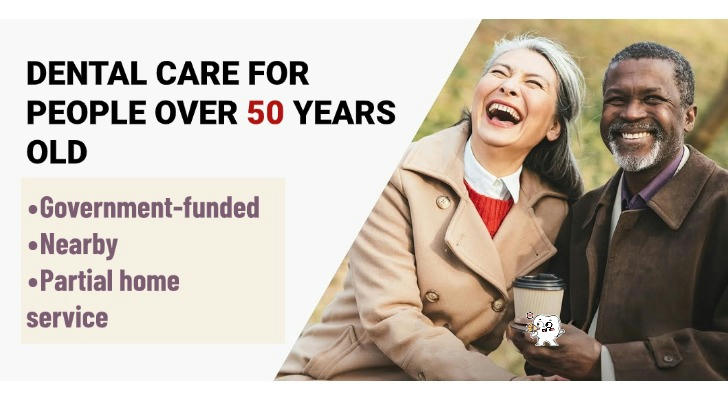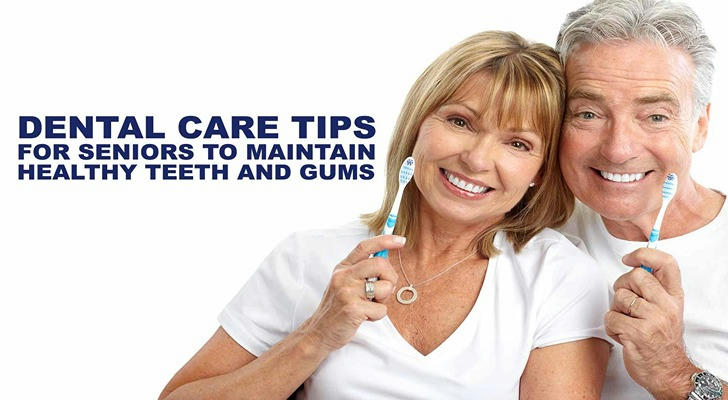How to Get Low-Cost Dental Care in the United States: Government-funded and Public Welfare Resources for People Over 50
Dental problems become more common as we age, but the high cost of treatment is often prohibitive. The good news is that there are a number of government-funded and public welfare platforms in the United States that provide affordable dental services for people over 50. This article will take you through the most worthwhile resources and provide practical advice based on age.

Ⅰ. What are the core dental care resources available through government funding or public welfare platforms?
1. Dental Lifeline Network
This is a national nonprofit network of volunteer dentists that provides complex dental treatment for the elderly, those with chronic diseases, those with physical disabilities, or those in financial difficulties. The program is operated by a state partnership and services include tooth extractions, root canal treatments, denture repairs, etc.
✅ Highlights:
⦁ Long-term treatment plan, not a one-time clinic
⦁ Special attention to people over 75 years old, without transportation or with mobility impairments
⦁ Some states provide home dental services, which greatly alleviates the difficulty of seeing a doctor for the elderly
⦁ The application threshold is relatively strict, requiring a doctor's certificate and application waiting
2. PACE Project (Program of All-Inclusive Care for the Elderly)
A comprehensive care program for the elderly funded by the US federal government and implemented by local medical organizations, mainly for elderly over 65 years old who meet Medicare and Medicaid qualifications. Dental services are included in daily management as part of overall medical care.
✅ Services include:
⦁ Regular dental check-ups, denture production and adjustment
⦁ Chronic disease management and nutritional guidance
⦁ Medical transportation arrangements (including dental visits)
⦁ One-stop management, eliminating the inconvenience of running around different clinics
3. Dentistry Day (National Public Welfare Dental Day)
National public welfare service day activity platform organized by volunteer dentists, which conducts community clinics across the country at fixed times. The biggest advantage is that the platform supports inputting zip codes and quickly viewing "dentist activity information nearby."For example, the next one is located at 4824 East Trindle Road, Mechanicsburg, PA and 16530 Nacogdoches Road, San Antonio, TX!
✅ Platform advantages:
⦁ Provides geo-location search function to help the elderly see a doctor nearby
⦁ Especially suitable for those who have not yet established a stable dental care relationship but are in urgent need of basic treatment
⦁ No insurance required, no complex thresholds, first come first served
4. Dentistry from the Heart (Community Oral Charity Program)
This is a public welfare platform that combines the strength of dentists' personal clinics to provide oral treatment services to low- and middle-income people by organizing "Charity Clinic Day".
✅ Features:
⦁ Various service types: tooth extraction, filling, teeth cleaning, etc.
⦁ Usually carried out in cooperation with private clinics, the environment is relatively comfortable
⦁ No age limit, especially for people over 50 years old

Ⅱ. Analysis of care needs at different ages
1. 50-64 years old: prevention and early intervention for working people
This stage is still in the active working period, but early problems such as periodontal disease, gum recession, and dentin sensitivity begin to appear. Many people ignore the examination and miss the best treatment period.
📢Nursing focus:
⦁ Annual basic dental examination and teeth cleaning
⦁ Pay attention to gum health and bad breath
⦁ Proper use of dentures Pre-consultation and evaluation
⦁ Recommended resources: Dentistry Day Participate in consultation and establish preliminary diagnosis and treatment records.Dentistry from the Heart Community clinic as a supplement to insurance
2. 65-74 years old: Restoration and replacement stage
With retirement and social security intervention, the pace of life of the elderly slows down, but problems such as tooth loss, root canal treatment, and denture replacement become more frequent.
📢Nursing focus:
⦁ Timely repair of missing teeth
⦁ Root canal intervention for chronic toothache
⦁ Start to pay attention to the impact of chewing efficiency on nutrient absorption
⦁ Recommended resources: PACE project Establish a holistic care relationship, integrating dentistry, nutrition, and transportation.If dental problems require urgent intervention, Dentistry Day can be used as an early start window
3. Over 75 years old: Comprehensive care stage
After entering the advanced age, dental care is not only about oral problems, but also about nutrition, emotions, and life independence.
📢Nursing focus:
⦁ Whether the patient can chew normally affects the overall nutrition and immunity
⦁ Toothache can easily lead to psychological withdrawal and loss of appetite
⦁ People with limited mobility need more sustainable home services
⦁ Recommended resources: Prioritize joining the Dental Lifeline Network (home treatment is available in some states)

Ⅲ. Real case: How dental treatment helps Alma R, 79 years old, San Antonio, Texas to reshape her life
Alma has been bedridden for a long time due to a stroke, and her teeth have fallen out severely. She relies on liquid food for meals. Her family is worried that she is malnourished and depressed. Through the local elderly service agency, she was recommended to participate in the Dental Lifeline Network project and successfully included in the comprehensive care system of PACE.
The treatment team customized dentures for her and performed two root canal treatments. Nursing staff came to help her wear and clean her dentures, and a nutritionist helped her adjust her diet. A few months later, Alma not only regained her weight, but her granddaughter also said, "Grandma is smiling brightly again."
IV. How to take action?
✅ Step 1: Contact the local senior center or community clinic to find out which projects are being carried out locally
✅ Step 2: Visit the Dentistry Day platform, enter your zip code, and find upcoming public dental services
✅ Step 3: Confirm whether you are eligible for the PACE project or Dental Lifeline Network, and prepare medical documents in advance
✅ Step 4: Establish a long-term dentist contact, even if it is a low-frequency treatment, it is more reassuring than seeking medical treatment every time
⭐ Conclusion: Make the smile of old age no longer expensive
Dental problems should not be a burden on old age. Starting at age 50, establishing an age-appropriate dental care mechanism will not only save future medical costs, but also help improve the quality of life. A number of government and community programs in the United States are providing reliable, economical and caring dental support for middle-aged and elderly people. As long as you take the first step, "eating well and smiling happily" will become a reality.
